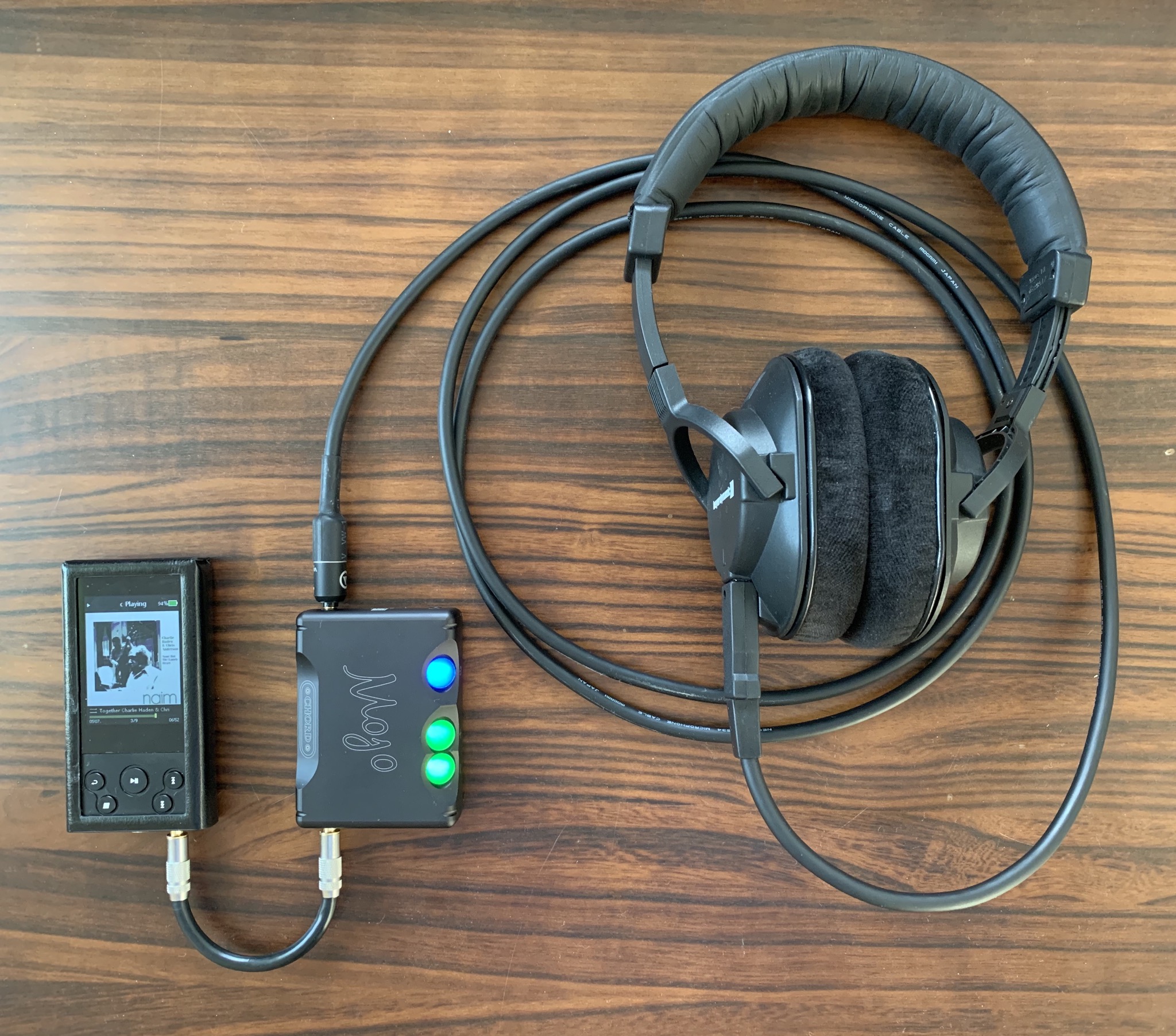Just got Supra Micro USB cables to my Mojo at my gaming computer!


Last edited:


Just got Supra Micro USB cables to my Mojo at my gaming computer!

You got the Chord case. I have too it's total quality.

Using it with the Beyerdynamics T5p - a match made in heavenAnyone use the Mojo with full-sized cans? Does it have enough juice? Looking to get back into the headphone game...
There is a lot of interesting info for new owners in the FAQ in post #3.Can anyone help me out? Picked up a mojo last week and using usb c to mobile, both qobuz and Tidal changed frequency colour indicator depending on what was being fed. Had an experiment with usb audio pro app (which I subsequently uninstalled because it stops all sound through usb c from Netflix etc) and since then, no matter what I play, the mojo indicator light is green. Now, do I trust that what tidal and qobuz tell me they are playing I am hearing ie; 44khz, 96khz, 192khz and ignore the colour on the mojo or is the phone doing something which means only a 96khz digital feed is going to the mojo? Funnily enough, if I connect the mojo to Chromecast audio via optical and stream from either of those apps then the sample frequency indicators do change colour.
Thank you.There is a lot of interesting info for new owners in the FAQ in post #3.
The default behaviour of Android devices is to automatically upsample ALL music files to 24/192.
The default behaviour of iOS devices is to automatically sample ALL music files to 16/48.
These behaviours persuade owners to use apps like UAPP, which will output the correct music feed. However one downside of UAPP is that it will grab 'exclusive mode' use of your device, which is why you had the problem with netflix.
The solution is to always fully switch UAPP off, before you try using another music source. If you still have more problems, then check the 'exclusive mode' settings on your device.
When you know how to find the menu, it should only take a few seconds to adjust.
The default behaviour of iOS devices is to automatically sample ALL music files to 16/48.
see above.This is not correct. Hopefully this isn't in the post #3 you always refer to.
It's very easy for anyone to verify incoming sample rates with Rob's DACs, with sample rate indicator.
Tidal iOS app (and Roon and Qobuz and mConnect and others) will all play at their correct sample rates via lighting output.
see above.
This is one of the problems I've got. My mojo is showing one thing but tidal and qobuz are telling me something different.
No worries - thank you.I was addressing the iOS comment, which was not correct. Easy to verify also.
You’re having Android issues right?
I don’t use Android so can’t help.
